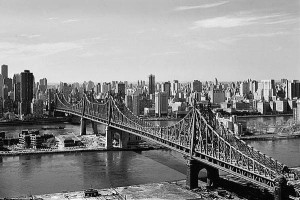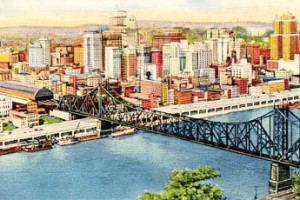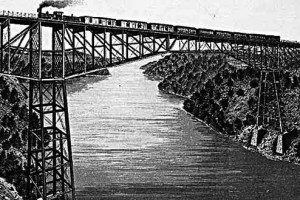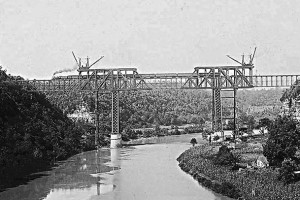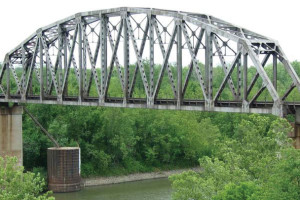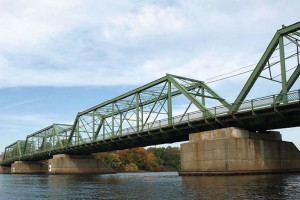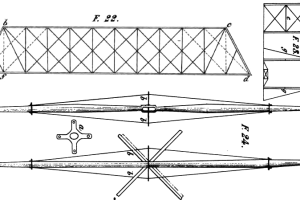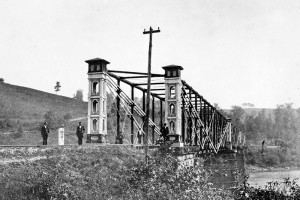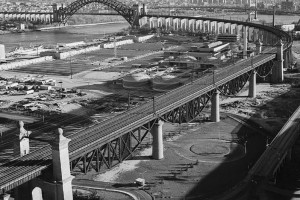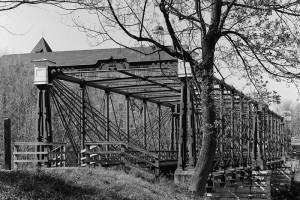The East River separating Manhattan Island from Long Island was long a barrier for people and goods traveling into and out of what was called New York City. Manhattan Island was formed by the East River, on the east, the Harlem River on the North, and the Hudson River, frequently called the North River, on the west. The East River is more like a strait connecting Long Island Sound with New York Harbor. Near the junction of the Harlem River, Long Island Sound and the East River is a zone of erratic currents called Hell Gate. …
Review Category : Historic Structures
The Pittsburgh, Carnegie & Western Railroad, commonly called the Wabash line, had tracks in Illinois, Indiana and Ohio generally running southwesterly from Toledo to St. Louis, but there was interest to connect to Pittsburg as a step in becoming a transcontinental railroad. The plan was to connect with the tracks of the Wheeling and Lake Erie Railroad at Toledo and then run southeasterly towards Wheeling on the Ohio River, where a short branch line would be built from Pittsburg Junction to Mingo on the Ohio River. From that point, there were two options: …
The Niagara River gorge had long separated the United States from Canada. It varied in depth up to 239 feet and in width generally between 800 and 1,000 feet between the Falls and Lewiston. Around 1836, suspension bridges were proposed by Francis Hall at Lewiston-Queenston and just above the falls. Charles B. Stuart, in 1845, then working on the location of the Great Western Railway in Canada, was looking for a way to connect his line with the Rochester and Niagara Falls branch of the New York Central. …
First Major Iron Cantilever Bridge in the United States
When engineers think of cantilever bridges, the Quebec Bridge with its 1,800-foot span and the Firth of Forth Bridge with its 1,710-foot spans come to mind. The cantilever principle in metal originated in Europe and the United States, but examples of cantilevers in wood and stone were found in many countries in the Far East, such as India, Tibet, China and Japan, as well as Norway and South America. …
Bridge historians and early textbooks generally call a truss with alternating compression and tension diagonals a Warren; however, sometimes it is called an equilateral truss since all panel lengths and diagonals are of equal length creating a series of equilateral triangles. When the panel lengths are shorter than the equal length diagonals, it was sometimes called an isosceles or isometric truss. …
Whipple, Single Canceled, Trapezoidal Truss
Most bridge historians and bridge textbooks state that a bridge with a single tension diagonal in each panel and a compression vertical with parallel chords and an inclined end post is a Pratt Truss. The usual truss profile is shown in Figure 1. …
Squire Whipple (STRUCTURE, September 2005 and November 2014) patented his bowstring truss in 1841 and built them across the Erie and other Canals and rivers. These were generally for wagons and carriages. In 1846/47, he wrote his A work on Bridge Building Consisting of two essays, The One Elementary and General, the other showing Original Plans and Practical Details for Iron and Wooden Bridges. In it he gave the first correct method of determining the load in every member of his truss by the method of joints, and even utilized a graphical method of determining these loads. …
After the success of Wendell Bollman’s truss at Harpers Ferry and elsewhere, Benjamin Latrobe encouraged Albert Fink to design a longer span iron bridge that he could use on his major river crossings between Harpers Ferry and the Ohio River. Fink (STRUCTURE, May 2006), after obtaining his engineering degree in Germany, immigrated to the United States in late spring 1849. He went to work on the B&O Railroad working with Wendel Bollman (STRUCTURE, February 2006) and Latrobe. …
New York City
Near the flagship Hell Gate Bridge (STRUCTURE, October 2013), and crossing a former inlet between Wards and Randalls Islands, stands Gustav Lindenthal’s still-in-service 1915 Little Hell Gate Bridge; four unique skewed-deck truss spans of reverse parabolic bowstring arches. They are visually striking, sited as they are above flat land and below miles of high plate-girder viaducts. The total length between centers of the abutments is 1153.5 feet. Four-rail tracks operate on the 60-foot wide deck (Figure 1). …
The Bollman Truss was the first widely adopted cast and wrought iron railroad bridge in the United States. It was designed and patented by Wendel Bollman (STRUCTURE, February 2006) on January 6, 1852 after he built several on the B&O Railroad. Richard Osborne built an earlier iron bridge in 1845 on the Reading Railroad at Manayunk, a portion of which is now on display at the Smithsonian Institution in Washington. It consisted of three cast iron trusses with wrought iron verticals. …

